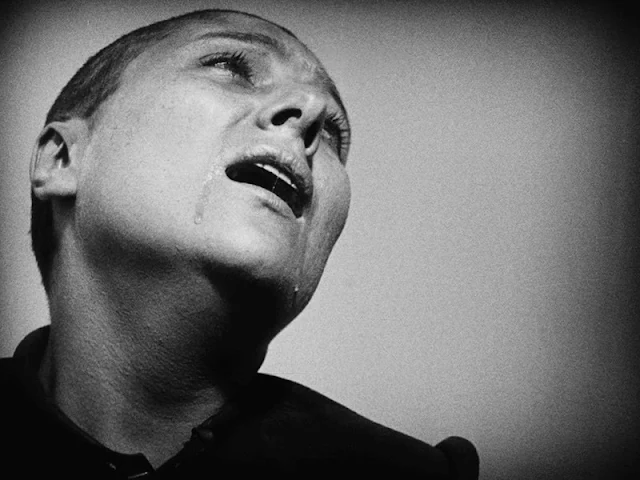"THE BOOK OF JOAN", another fine piece from Roland Quelven
"THE BOOK OF JOAN"
This wonderful short work from Roland Quelven
is a tribute to Carl Theodor Dreyer's
silent cinematic masterpiece
"The Passion of Joan of Arc".
The Book of Joan from Roland Quelven on Vimeo.
The Book of Joan - Odium Theologicum - Napolecitta 28 -
Video and Sound collage by Roland Quelven.
"The Passion of Joan of Arc" by Carl Theodor Dreyer debuted on April 21, 1928 at the Cinema Palads Teatret in Copenhagen. After a few private screenings, it finally premiered in Paris on October 25, 1928 at the Cinema Marivaux. The film was delayed because of the longtime efforts of many French nationalists, who objected to the fact that Dreyer was not Catholic and not French and to the then-rumored casting of Lillian Gish as Joan. As early as January 1927 Jean-Jose Frappa said that "whatever the talent of the director (and he has it)...he cannot give us a Joan of Arc in the true French tradition. And the American 'star'...cannot be our Joan, wholesome, lively, shining with purity, faith, courage and patriotism. To let this be made in France would be a scandalous abdication of responsibility."
Before its French premiere, several cuts were made by order of the Archbishop of Paris and by government censors. Dreyer had no say in these cuts and was angry about them. Later that year on december 6th, a fire at UFA studios in Berlin destroyed the film's original negative and only a few copies of Dreyer's original cut of the film existed. dreyer was able to patch together a new version of his original cut using alternate takes not initially used. This version was also destroyed in a lab fire in 1929. Over the years it became hard to find copies of Dreyer's second version and even harder to find copies of the original version of the film. It was re-released in 1933 in a 61 minute version without any intertitles and including a new narration by radio star David Ross.
In 1951 Joseph-Marie Lo Duca found a copy of the negative of Dreyer's second version of the film in the Gaumont Studios vaults. Lo Duca then made several significant changes to the film, including a new musical score by Bach, Albinoni and Vivaldi, removing many of the intertitles and replacing some with subtitles. Lo Duca's version of the film was the only available copy of the film for many years. Dreyer objected to this version and said that it was in bad taste.
The original version of the film was lost for decades after a fire destroyed the master negative and only variations of Dreyer's second version were available. In 1981 an employee of the Kikemark Sykehus mental institution in Oslo found several film canisters in a janitor's closet that were labeled as being The Passion of Joan of Arc. The cannisters were sent to the Norwegian Film institute where they were first stored for three years until finally being examined. It was then discovered that the prints were of Dreyer's original cut of the film before government or church censorship had taken place. there were never any records of the film being shipped to Oslo, but film historians believe that the then director of the institution may have requested a special copy since he was also a published historian. (Source Wikipedia).
Video footage from "The Passion of Joan of Arc" by Carl Theodor Dreyer.
The "moving window" footage from "Estanca17", a collaborative and experimental project with Isabel Pérez Del Pulgar.
I would like really to add much more commentary to this post but I do not wish to distract in any way from what Roland has achieved here.
I'm thinking of writing a separate essay about the astonishing young woman Joan of Arc (Jeanne d'Arc) and the nightmare of her betrayal and murder by decree. It is obviously a very large subject to tackle and I wish to make a good fist of it, so I'll leave it for another day.
Dear Roland, as I mentioned to you, I only discovered this piece recently. You make so many fine movies I can hardly keep up with viewing them all.
Thank you for your superb work.
PT




Comments
Post a Comment